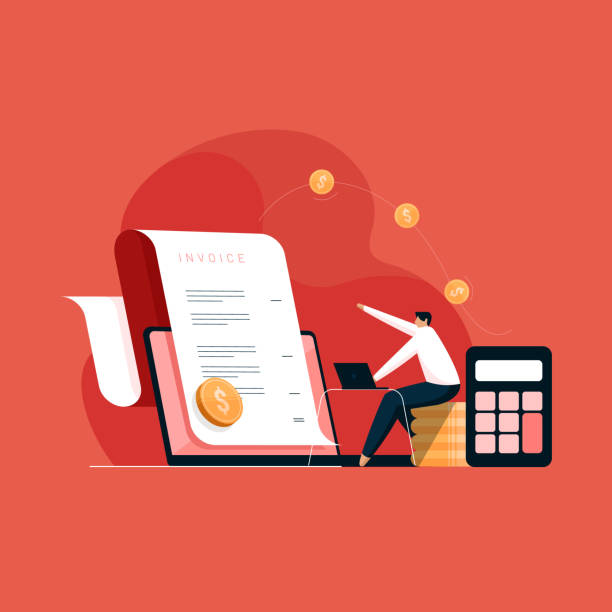A Comprehensive and Enlightening Journey

Introduction: The Vital Role of Invoicing
Invoice is more than just a piece of paper in a business world- it’s an important way to communicate and make sure you get paid for what you sell or do. How does invoicing work? How can you learn to be good at it to make your business run smoother? Read this article to understand how the process works.
What is an Invoice, Anyway?
At its core, an invoice is a document that a seller provides to a buyer, itemising the goods or services provided and stating the amount due. However, its role goes far beyond a simple bill. It’s a legally binding agreement that not only prompts your customers to pay you but also acts as a vital record for accounting and tax purposes. It’s a document that holds weight and helps in building a trustworthy relationship between you and your clients.
Why Is The Invoicing Process Important?
To put it simply, without a proper invoicing process, you’re likely to encounter bumps along your cash flow journey. Invoices ensure that payments don’t fall through the cracks, helping you maintain a steady income stream and keeping your business finances healthy.
A Step-by-Step Guide to the Invoicing Process
Now that we’ve set the stage let’s dive into the main event: A Step-by-Step Guide to the Invoicing Process. Here we’ll break down the invoicing procedure, from creating an invoice to receiving payment.
Step 1: Provide the Service or Product
First things first, to bill someone, you need to deliver a product or service. This is the initial phase where the transaction actually happens—whether you’re selling designer handbags or providing consultation services.
Step 2: Create the Invoice
Once the transaction is complete, the next step is to create an invoice. This should include important details such as the description of goods or services, the quantity, the price, tax information, due date, and your business’s payment details.
Step 3: Send the Invoice
After creating the invoice, it’s time to send it to your client. In today’s digital world, this is usually done electronically through email or an online invoicing system. However, some businesses still send physical invoices, especially if they operate on a local scale.
Step 4: Follow Up
In a perfect world, all invoices would be paid on time. But alas, we don’t live in that world. This is where the follow-up comes in. If your client hasn’t paid by the due date, it’s time to gently remind them. You could do this via email, phone call, or through an automated reminder if you use online invoicing software.
Step 5: Receive and Record the Payment
Once your client has paid, it’s important to record this payment in your accounting books. This keeps your financial records accurate and can be a lifesaver during tax season!
Improving Your Invoicing Process: Top Tips
While the basic process seems straightforward, there’s always room for improvement. Here are a few tips to help you streamline your invoicing process and get paid faster.
Tip 1: Automate Your Invoicing
If you’re still doing manual invoicing, it’s time to hop on the automation bandwagon. Not only will it save you heaps of time, but it can also help to reduce errors, ensure timely follow-ups, and improve overall efficiency.
Tip 2: Set Clear Payment Terms
Having clear payment terms can prevent misunderstandings and potential disputes. Make sure your invoice includes the payment due date, any late fees, and preferred payment methods.
Tip 3: Be Professional and Polite
Remember, your invoice is a reflection of your business. Ensure it is professional, accurate, and clear. A polite tone can also make a difference in getting you paid on time!
Frequently Asked Questions (FAQs)
Let’s address some common questions about the invoicing process.
1. What should be included in an invoice?
An invoice should include the seller’s and buyer’s contact details, invoice number, date, description of goods or services, quantity, price, tax information, payment terms, and due date.
2. What is the difference between a receipt and an invoice?
An invoice is a request for payment, while a receipt is proof of payment.
3. How can I make my invoicing process more efficient?
Automating your invoicing process, setting clear payment terms, and maintaining professional, polite communication can significantly increase efficiency.
4. Can an invoice be changed after it has been sent?
Generally, once an invoice has been sent, it should not be changed. If changes are needed, it’s better to issue a credit note and a new invoice.
5. Do I need to keep copies of sent invoices?
Yes, maintaining copies of all sent invoices is important for accurate record keeping and for tax purposes.
6. What happens if an invoice is not paid?
If an invoice is not paid by the due date, it’s common to send a reminder to the customer. If payment is still not received, the matter may be escalated to a debt collection agency or legal action may be taken.
Conclusion
This simple and easy-to-follow guide hopefully helped you understand the invoicing process. By following the steps, you can make your invoicing process more efficient and make sure you receive payments on schedule and keep your business running smoothly. Invoicing is not just about asking for payment, it’s about fostering relationships, building trust and pushing your business towards success.
External Links/ Sources:
What is Invoice Processing? Definition, Steps, Flowchart & Software
